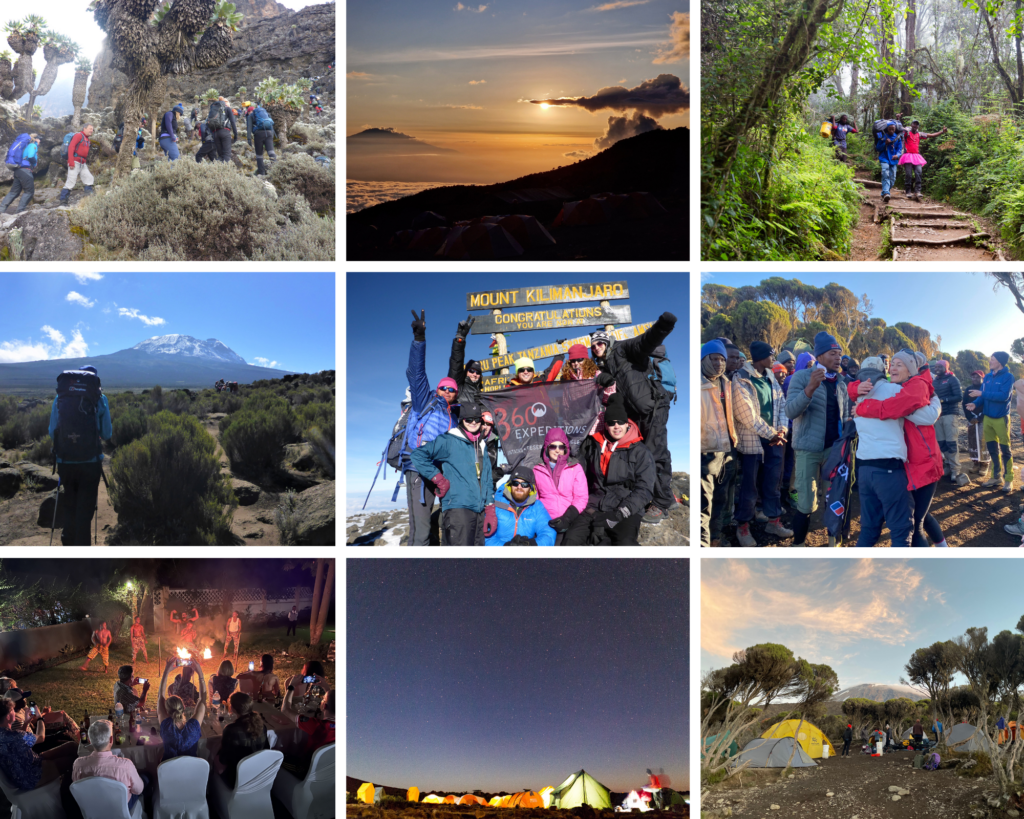Hemmingway began one of his most famous short stories, The Snows of Kilimanjaro, with the following paragraph.
Kilimanjaro is a snow covered mountain 19,710 feet high, and is said to be the highest mountain in Africa. Its western summit is called the Masai “Ngàje Ngài,” the House of God. Close to the western summit there is the dried and frozen carcass of a leopard. No one has explained what the leopard was seeking at that altitude.
Set within sight of Africa’s most majestic peak, the story centres on a writer close to death, who is looking back on episodes from his past. It is a tale concerned with missed opportunities, squandered potential and a protagonist who was lazy, wasteful and regretted his tendency to always pursue the easy option. But it is also a story in which Kilimanjaro (and mountains in general) symbolises adventure, heroic struggle and the rewarding nature of taking the more exciting and challenging path.
It is a spectacular story and certainly worth reading if you believe in pushing yourself, grabbing life with both hands and experiencing all this world has to offer. It is also a wonderful read if, like us, you find yourself enthralled by Kilimanjaro’s enchanting white-capped peak and longing for an adventure that culminates in you standing atop the “Roof of Africa”.
As the tallest mountain in Africa and one of the Seven Summits, Kilimanjaro is a popular target for those looking to take their first steps into the world of big-peak trekking or who want to build on previous achievements and tackle another iconic ascent.
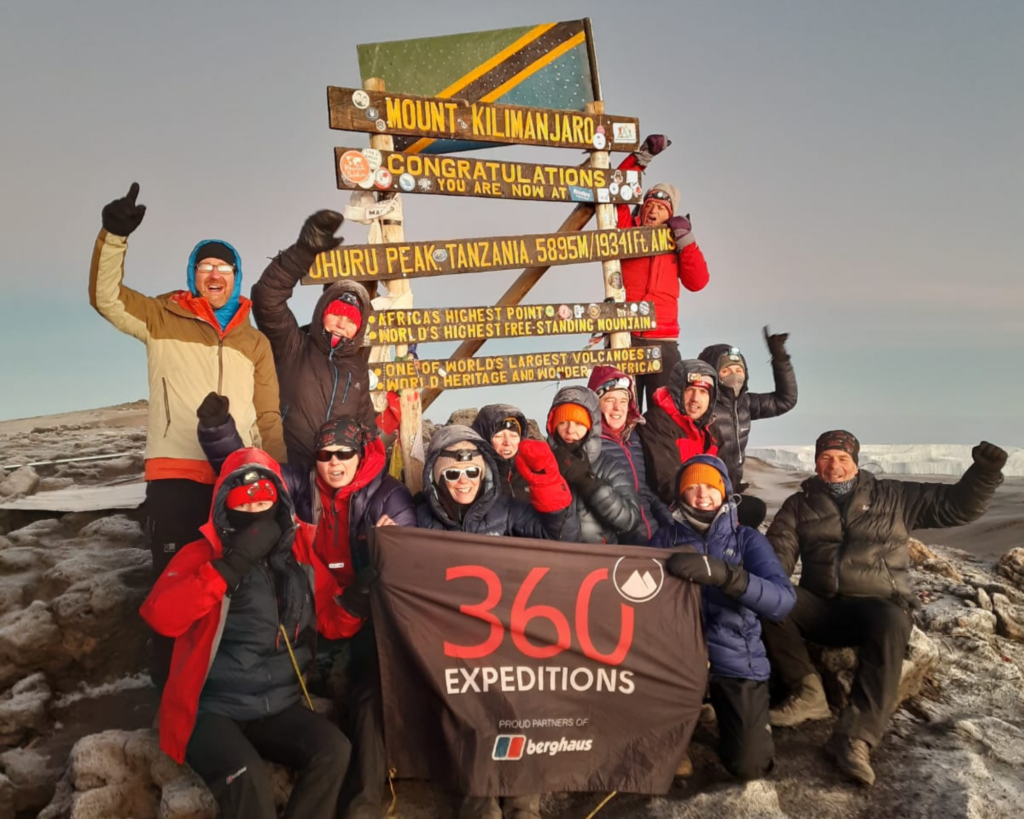
And there is no better way to experience this magnificent mountain than via the Lemosho route.
Africa’s contribution to the Seven Summits
But before we go in-depth on the Lemosho route, let’s take a look at Kilimanjaro more broadly. Topping out at 5,895 metres (19,341 ft) above sea level, the mountain is situated in Tanzania, East Africa. A dormant volcano, it comprises three volcanic cones, the tallest of which is known as Uhuru Peak. This roughly translates to Freedom Peak in the regional Bantu language, Kiswahili.
Kilimanjaro is also the highest single free-standing mountain in the world, which makes it remarkably unique and easy to identify. Its distinctive snow-covered flat top is entirely isolated, with no other peaks to distract the eye within 60 kilometres. Glacier ice is in slow retreat up the mountain and climate experts estimate that most of the ice will disappear by 2040. It is highly unlikely there will be any ice left at all by 2060 (EGU).
As you would expect of such a solitary and singular peak, Kilimanjaro has played a significant role in local cultures for as long as we know. It is the home of gods and spirits and sacred sites are dotted across its slopes. The mountain also appears in ancient historical accounts. In the 1st and 4th Centuries, Ptolemy and Herodotus mention a moon mountain that is the source of the Nile. Despite Kilimanjaro bearing no relation to the Nile, the moon mountain is thought to be Kilimanjaro.
In modern mountaineering, Hans Meyer, a German geographer became the first European to reach the summit in 1889. For the 100th Anniversary of the ascent, in 1989, efforts were made to identify the Tanzanian porters who had accompanied Meyer on his ascent. During the research, experts traced one of the guides in the expedition to a living resident in a nearby village. The committee in charge of the anniversary celebrations concluded that he had been a part of the team and recognised him as a co-first-ascendent.
What makes the Lemosho route special?
The Lemosho route is the 360 Expedition favourite for several excellent reasons. The quietest of all the Kilimanjaro routes, you are much less likely to run into traffic while hiking the Lemosho, ensuring you enjoy the experience that much more. It also takes you through some wonderfully varied terrain, is slightly longer and has a high summit success rate. That’s the holy trinity right there!
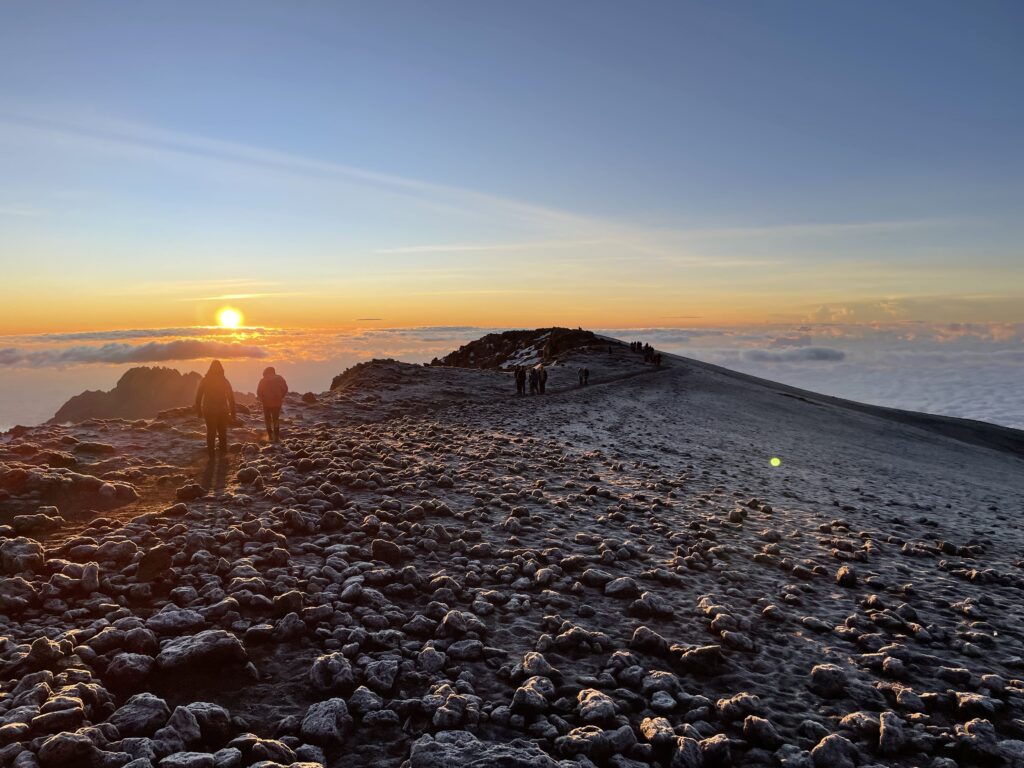
In total, there are seven official routes – the Marangu, Machame, Rongai, Shira, Umbwe, Northern Circuit and the Lemosho routes. And Lemosho is the most scenic and visually spectacular.
What does a Lemosho route itinerary involve?
Typically, a Lemosho route itinerary lasts somewhere between six and eight days. The ascent takes up the vast majority of that time, as the super quick descent takes trekkers down via the Millenium Camp and Mweka Gate in less than two days. Based on the 360 Expedition trek, a Kilimanjaro ascent via the Lemosho route would follow this example itinerary.
Day One – Moshi to Shira 1
Starting in Moshi at 100 metres, the first day involves a minibus journey to the Londorosi Gate at 2,250 metres and then to the Morum Picnic Site. This enables an official departure from a part of the trail that rarely sees other trekkers. The rest of day one consists of a two-hour trek to Shira 1 camp.
Day Two – Shira 1 to Shira 2
After easing in slowly on day one, the second stage of the journey sees you trek from the Shira 1 camp at 3,500 metres to the Shira 2 camp at 3,900 metres. With a 400-metre altitude gain, the trek will take approximately three to four hours. Along the way, you pass Cathedral Point with its breathtaking views, join the traditional Lemosho route and walk in the shade of Kibo, Kilimanjaro’s tallest summit cone.
Day Three – Shira 2 to Barranco
On day three, you will break the 4,000-metre line and enter the mountain’s surreal low-alpine desert landscape. While the goal is to make it to the foot of the Great Barranco Wall and camp there, this will depend on how the group feels and the conditions. If Barranco is out of reach, it may be that you make camp at the Lava Tower. A gnarled rock formation that experts believe may be the result of a volcanic vent.
Day Four – Barranco to Karanga Camp
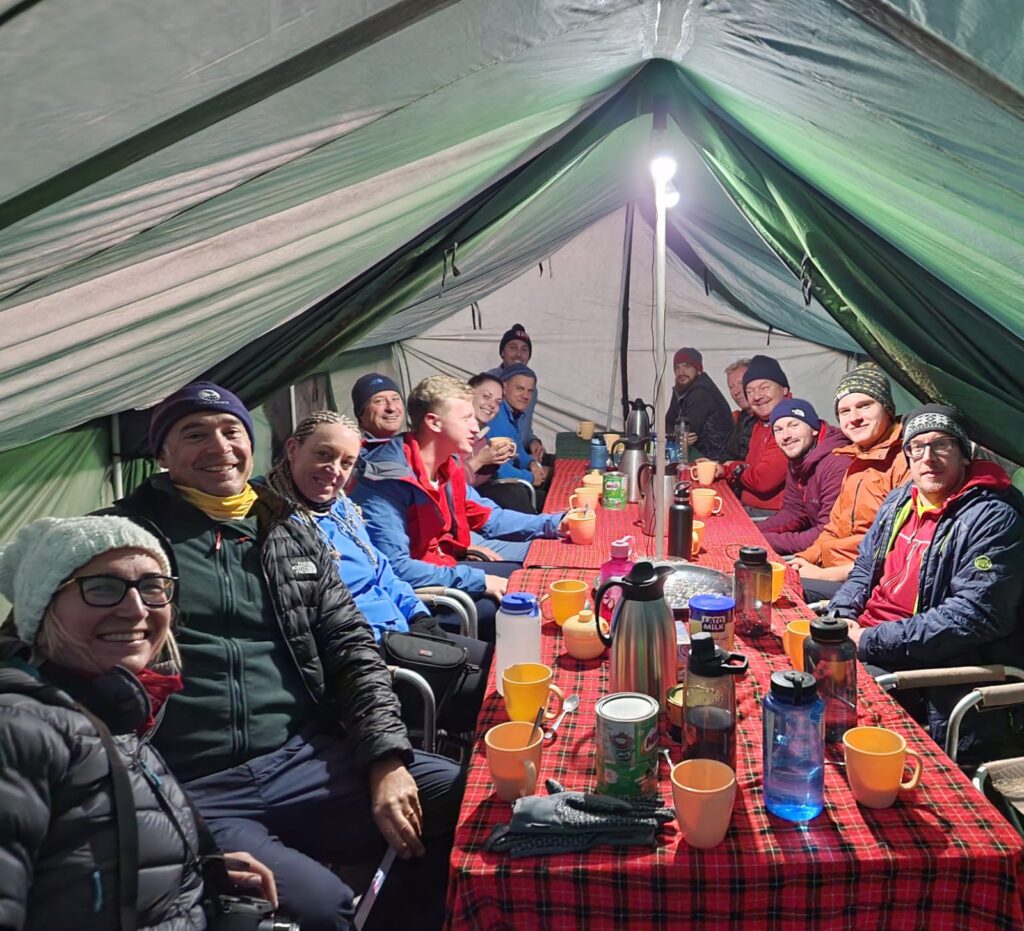
If you stopped at Barranco, you are only around three kilometres from Karanga Camp. But those three kilometres can easily take in excess of three hours. For many people, this is one of the most exciting days of the trip, as you scramble over the Great Barranco Wall and trek through a series of gorgeous valleys until you reach Karanga Camp.
Day Five – Karanga to Barafu Camp
Day five sees you climb to 4,640 metres and prepare for your summit attempt. It means going at a relaxed pace, so you are relatively well-rested for an early start tomorrow.
Day Six – Barafu to the Summit and Millennium Camp
An early start gives you the best chance of summiting, so you strike camp early and begin climbing the final slopes of the summit cone. You will probably hit these slopes as the sun begins to rise, soaking the glacial ice ahead and lighting up the awe-inspiring views across the Tanzanian plains. On reaching the summit, you will have time to celebrate, soak up the scale of your achievement and enjoy the moment before beginning the descent to Millennium Camp at 3,720 metres.
Day Seven – Millennium Camp to Mweka Gate
The final stage of the journey utilises a trail that loses elevation gradually and passes through the lush rainforest before arriving at Mweka Gate. You will meet your transfer transport at the gate, which will take you back to your hotel, where you can raise a glass to your achievement.
Who is the Kilimanjaro Lemosho route for?
The Kilimanjaro Lemosho route is perfect for anyone with a sense of adventure and a desire to challenge themselves. While Kilimanjaro is by no means easy, it is a great way to experience the thrill of mountain trekking or an excellent target for those who want to achieve something they never thought possible.
Though you need to be fit to reach the Kilimanjaro summit, you do not require any technical mountaineering skills or experience. With the right preparation, Kilimanjaro is a realistic target for anyone who has ever dreamed of scaling one of the Seven Summits.
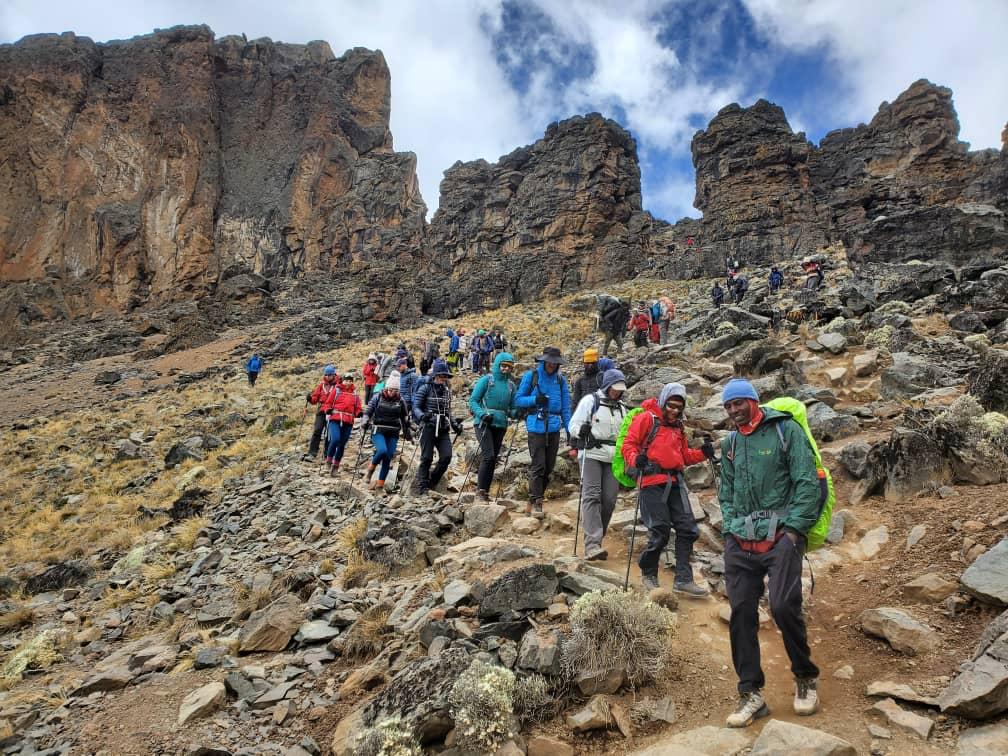
Of course, Kilimanjaro is often the first step on a long journey to summit all seven of those peaks. You may think that is impossible right now. But it’s incredible the number of 360 Expedition participants who believe Kilimanjaro will be their limit, only to discover they have an urge to go further. Kilimanjaro tends to light a fire in people that is very hard to ignore.
What level of fitness is required?
You need a relatively good level of fitness to make it up Kilimanjaro. But you do not need to be the perfect physical specimen. While physical preparation will help you reach the summit, ensuring you are fit enough is just as much about enjoying the experience. If you are absolutely shattered and only just clinging on physically, you are not going to have the best time.
At 360 Expeditions, we have training programmes to help you prepare for your trek. These are expedition-specific and provide you with an insight into the amount of physical preparation you should be aiming for.
Are there any other challenges?
As well as steep slopes and long days (summit day can involve up to 12 hours of trekking), you will also have to contend with the altitude. This can affect your breathing and sleeping. Acute Mountain Sickness can be an issue once above 2,500 metres and result in headaches, nausea and vomiting. A well-planned itinerary will ensure you ascend at a reasonable rate, reducing the likelihood of AMS becoming a significant issue. If trekking with a professional expedition organisation, your trek leaders will have the experience required to help you manage AMS and give you the best possible chance of making it to the summit.
When is the best time to climb the Kilimanjaro Lemosho route?
We think September to early March is the optimal climbing season. It is slightly clearer and there is usually less cloud cover between August and October, this results in drier but colder conditions. In January and February, it tends to be a little warmer, as there’s more cloud cover. However, this does mean it can be quite wet. You may even get a smattering of patchy snow during this period. Though these are both great periods to climb Kilimanjaro, September and October might be the most ideal conditions.
Trekking from June to October also means cool and clear conditions. However, the trails tend to be much, much busier as it’s the school holidays. The crowds seem to disappear as soon as October rolls around. Flights are also pretty bad during the holidays (which applies to December just as much as the summer).
Realistically, you can climb Kilimanjaro pretty much all year around. While the seasonal weather detailed above reflect the general trends and are based on our extensive experience operating on the mountain, it is also worth noting that climate change is making for more unpredictable conditions. As such, every type of weather can occur regardless of the season.
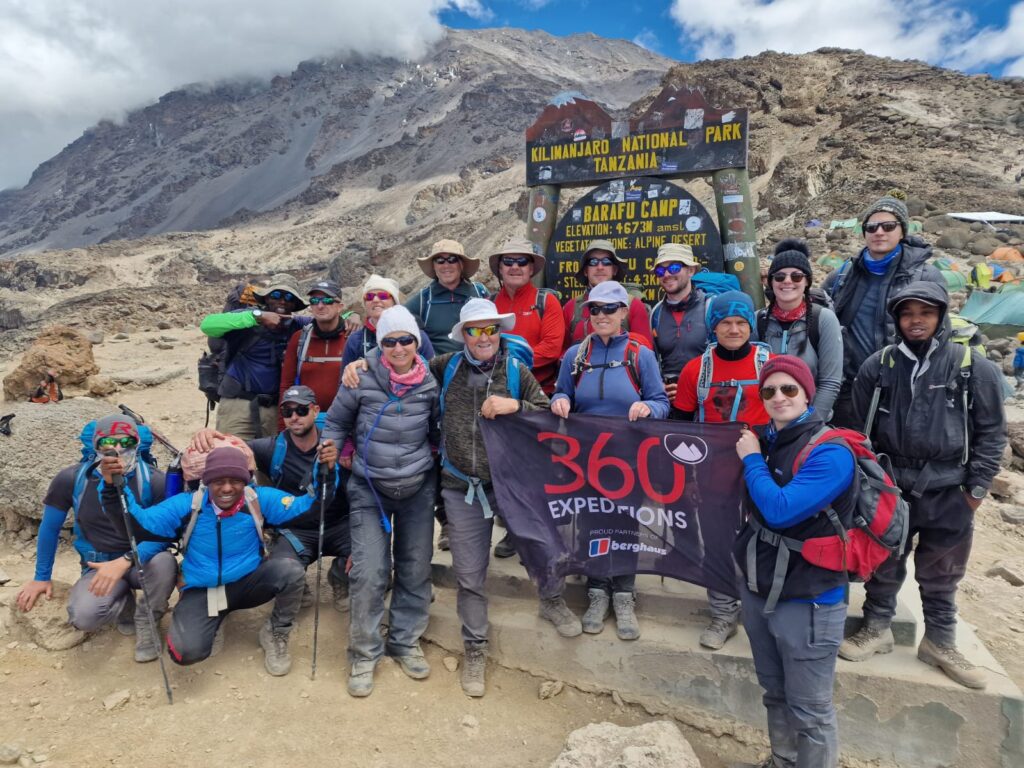
Accommodation on the trek
In almost all cases, you will sleep in tents as you ascend Kilimanjaro. Whether these are set up for you or not depends on the nature of your expedition and the company you are trekking with.
There are many established camps all the way up the mountain. The number of trekkers staying at each site will vary depending on the route and how close to the summit you are. On the Lemosho route, you can expect relatively quiet camps until you begin nearing the summit.
What clothing and equipment is required?
If you want a complete rundown, take a look at our dedicated Kilimanjaro kit list. One thing to note is that, despite being almost on the equator, Kilimanjaro still experiences some seriously low temperatures. As you trek higher, more layering is required – particularly on summit night. Due to the altitude, it can get cold quickly and you need to be prepared.
Visas and travelling
You will require a visa to enter Tanzania, which you can usually apply for at the border. However, we recommend contacting your closest Tanzanian embassy before the trip and pre-arranging your visa to avoid unforeseen delays or problems on arrival.
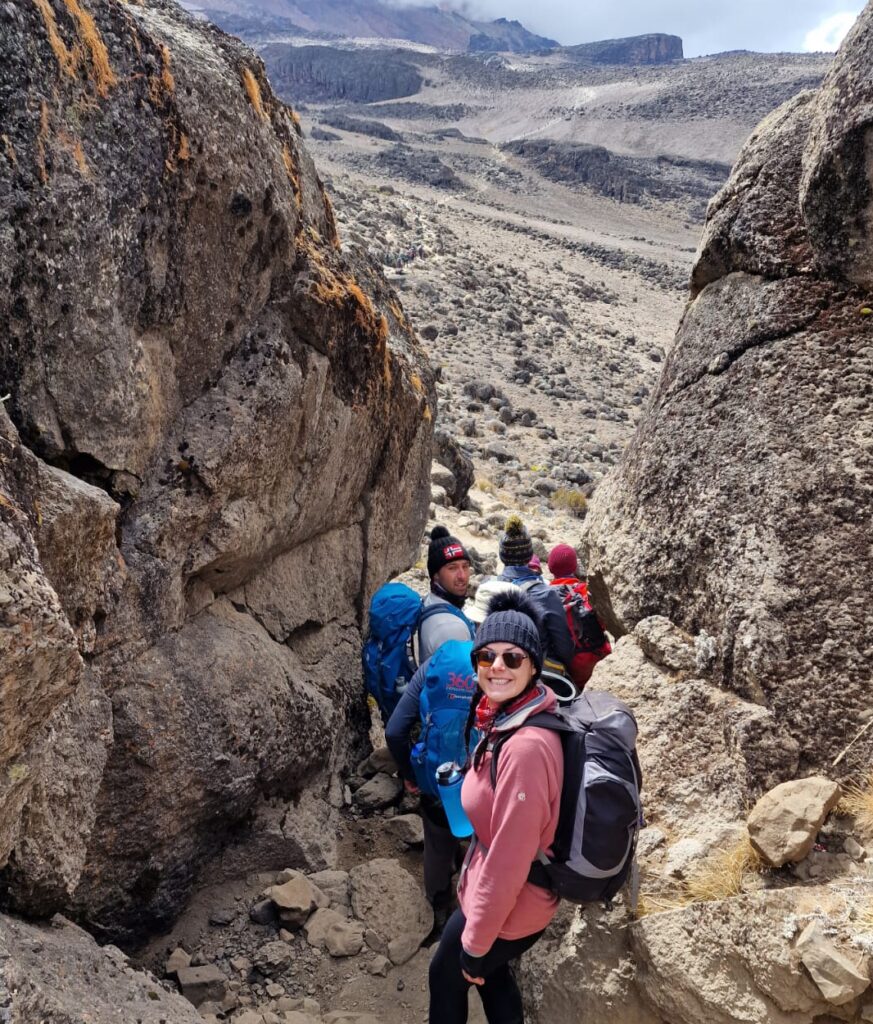
Most trekkers begin their expedition in Moshi, the capital of the Kilimanjaro region. Flights into the local Kilimanjaro International Airport are the simplest, quickest and easiest way to access the Kilimanjaro National Park.
What vaccinations are required?
We recommend ensuring you have the following vaccinations before travelling.
- Hepatitis A
- Typhoid
- Diphtheria
- Tetanus
- Polio
- Yellow Fever
However, we also advise you to check with your local travel clinic or GP surgery to ensure this list is up-to-date and contains all the vaccinations you will need.
Kilimanjaro Lemosho Trek with 360 Expeditions
The excellent 360 Expeditions Kilimanjaro Lemosho Trek takes place over 11 days and is one of our most popular mountain experiences. That’s all down to our extensive Kilimanjaro expertise and experience. 360 Expeditions co-founder, Rolfe Oostra, has climbed Kilimanjaro more than 60 times and trained our top team over ten years, putting them in a position to deliver outstanding expeditions time and time again. The Kilimanjaro porters’ union, the governing body supporting porters and other local workers, also recognises our expeditions meet the required standards, so you know you are joining an ethical trek.
A fully supported expedition that sees you reaching the summit of Africa’s tallest mountain, this expedition is the trip of a lifetime, a bucket list challenge and maybe even an unforgettable first step on a mountaineering adventure that will take you to every corner of the planet.
To learn more about our expedition, check out our dedicated Kilimanjaro Lemosho Trek page for a full itinerary, kit list and FAQs. You can also get in touch to discuss this or any other of our trekking adventures. We would love to hear from you.
